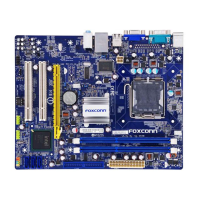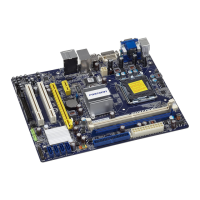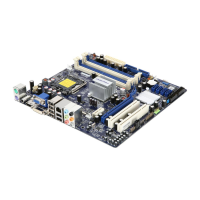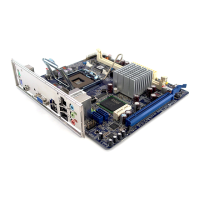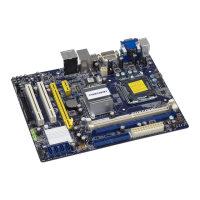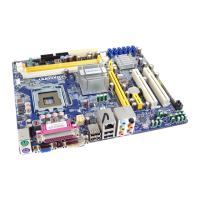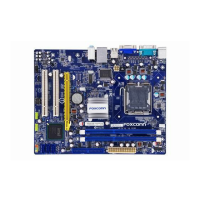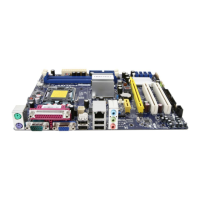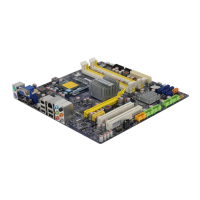
Do you have a question about the Foxconn G45M Series and is the answer not in the manual?
| Model | G45M Series |
|---|---|
| Form Factor | Micro ATX |
| Socket Type | LGA 775 |
| Memory Type | DDR2 |
| Maximum Memory Supported | 8GB |
| Chipset | Intel G45 |
| Memory Slots | 4 |
| PCI Express x16 Slots | 1 |
| PCI Express x1 Slots | 1 x PCI Express x1 |
| PCI Slots | 2 |
| IDE Ports | 1 |
| USB Ports | 8 |
| LAN | Realtek RTL8111C |
| Video Outputs | VGA, DVI |
Detailed technical specifications of the motherboard components and features.
Diagram and labels identifying key connectors and components on the motherboard.
Description of rear panel ports for external device connectivity.
Step-by-step guide for installing the processor and its cooling solution.
Instructions for installing DDR2 RAM modules, including dual channel configuration.
Guidance on inserting PCI Express and PCI cards into expansion slots.
Details on connecting power supply, front panel, audio, and other internal headers.
Explanation of jumper functions, including Clear CMOS, and how to set them.
Procedure to access the BIOS setup utility during system startup.
Overview of the BIOS main menu options and navigation controls.
Displays system configuration details such as BIOS version, CPU, and memory.
Configuration options for smart power LED and overclocking/voltage settings.
Advanced system settings including boot device priority, quick boot, and BIOS write protection.
Configuration for North Bridge and South Bridge chipset features, including memory and graphics.
Settings for onboard devices like SATA, USB, audio, and LAN controllers.
Enabling or disabling onboard LAN, USB, HDA audio, and other integrated peripherals.
Configuration for Trusted Computing Group (TCG) and Trusted Platform Module (TPM) support.
Settings for SuperIO components like floppy controller, serial port, and IrDA.
Options for legacy USB support, USB 2.0 controller mode, and EHCI hand-off.
Configuration of ACPI suspend types and wake-up event settings.
Settings for initial graphics adapter and PCI IDE bus mastering.
Monitoring system temperatures, fan speeds, voltages, and case open warning.
Setting supervisor and user passwords, access levels, and boot sector virus protection.
Restores BIOS settings to optimal default values for system stability.
Saves current BIOS settings and exits the setup utility.
Exits the BIOS setup utility without saving any modifications.
Guide to installing essential system drivers and software utilities from the CD.
Software for monitoring system parameters and adjusting settings like CPU clock and voltage.
Utility for backing up and updating system BIOS, drivers, and software online or locally.
Tool for backing up, changing, and deleting the boot time logo image.
Desktop Management Interface viewer for system analysis and troubleshooting.
Explanation of RAID concepts like mirroring, striping, and error correction.
Overview of Intel's technology for managing RAID configurations and drives.
Steps to create a bootable floppy disk with RAID drivers for OS installation.
Setting the SATA mode in BIOS to AHCI or RAID for RAID functionality.
Detailed steps to create RAID volumes (RAID0, RAID1, RAID5, RAID10) using the BIOS utility.
Steps to integrate RAID into an existing Windows XP system for data storage.
Guide to installing Windows XP, including RAID driver integration and partitioning.

